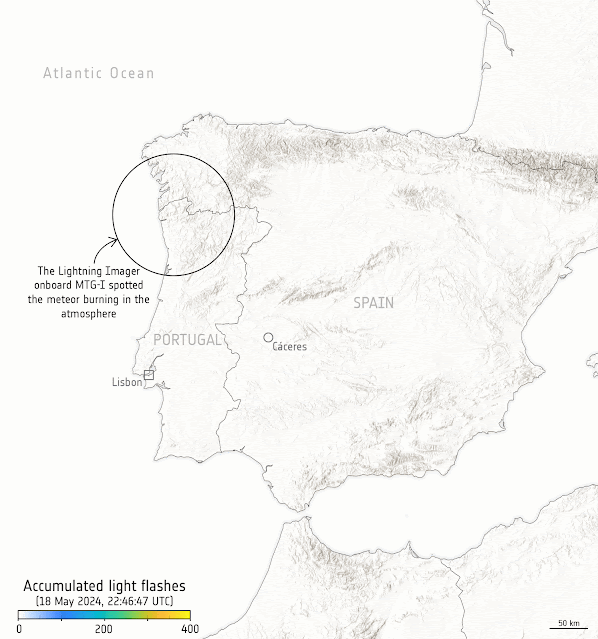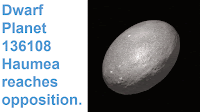Witnesses across Portugal, Spain, and France have reported observing a bright fireball meteor slightly before 11.50 pm local time Saturday 18 May 2024 (slightly before 10.50 pm on Saturday 4 May, GMT). The fireball is described as having moved from southeast to northwest, appearing to the northwest of Columbus and disappearing to the east of Fort Wayne. A fireball is defined as a meteor (shooting star) brighter than the planet Venus. These are typically caused by pieces of rock burning up in the atmosphere, but can be the result of man-made space-junk burning up on re-entry.
On this occasion the fireball was also observed from space, by a Meteosat Third Generation weather satellite in a geostationary orbit 35 000 km above the Earth. The satellite imaged the meteorite with its Lightening Imager, which is usually used (as its name suggests) to detect lightning, but which was able to track the meteor as a series of bright flashes, as the surface of the body ablated away, due to the high speed (about 160 000 km per hour) at which it was passing through the atmosphere.
Objects of this size probably enter the Earth's atmosphere several times a year, though unless they do so over populated areas they are unlikely to be noticed. They are officially described as fireballs if they produce a light brighter than the planet Venus. The brightness of a meteor is caused by friction with the Earth's atmosphere, which is typically far greater than that caused by simple falling, due to the initial trajectory of the object. Such objects typically eventually explode in an airburst called by the friction, causing them to vanish as a luminous object. However, this is not the end of the story as such explosions result in the production of a number of smaller objects, which fall to the ground under the influence of gravity (which does not cause the luminescence associated with friction-induced heating).
These 'dark objects' do not continue along the path of the original bolide, but neither do they fall directly to the ground, but rather follow a course determined by the atmospheric currents (winds) through which the objects pass. Scientists are able to calculate potential trajectories for hypothetical dark objects derived from meteors using data from weather monitoring services.
See also...











%20(1).png)